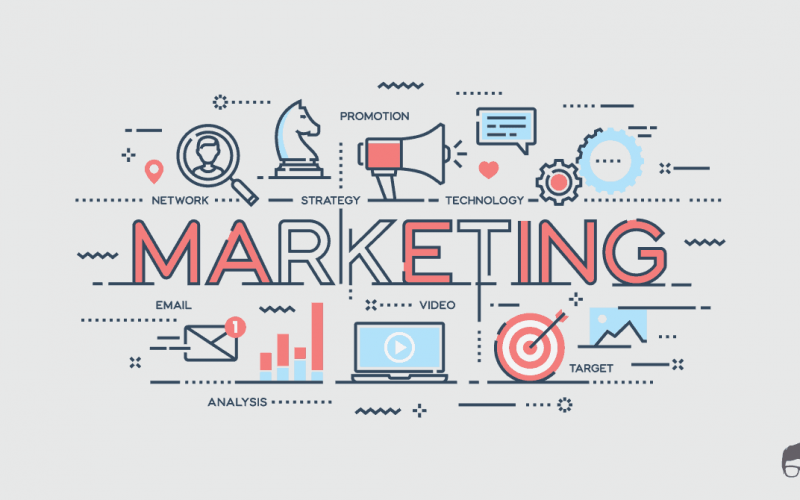Every marketer in the world today desires to have a good measure of all his return on investment (ROI).
The marketing here is location independent since we have both online and offline marketing which is widely being practiced today depending on the type of business that someone is handling.
If you have ever imagined how you can measure the marketing performance of either your business or your company, then you are on the right web page.
When it comes to marketing, most especially in the digital world, every single marketing funnel or content that you promote to engage your audience or increase sales needs to be tested and measured as well.
A marketer who always measures his marketing performance will be able to know the funnels that are not performing well as he wants them to be.
This will in turn give him room to do A/B testing to find out the way visitors react over the funnel when they come across it.
Because of how dynamic the world is; for example, new technologies are being released in the digital world daily, digital or online marketing changes more rapidly within a short time than that offline marketing.
If you are a marketer who uses content marketing to promote your products, we have culled the best ways you can easily measure your marketing performance without the need to hire an external marketer.
Top 10 Metrics for Measuring Marketing Performance
In this section, we detailed the best metrics that you can use as a marketer to measure your marketing performance with ease.
#1. You need to set goals for all your campaigns
As a good marketer, you must have some contents that you will point to your landing pages to increase your conversion rate.
If you don’t have landing pages for some of your strategic content, you may end up losing the traffic that you generated for most of your campaigns.
Also, if you are an expert, you should be able to know the type of content or campaign that you will target in building your online brand awareness; a good example of this is your social media handles.
We placed setting goals for each of your campaigns first because it is a key factor when it comes to measuring marketing performance.
If you have a social media post that got a lot of engagement and also your audience shared it with their friends, you can’t tell how many conversions the post will have if you created a landing page that will trigger people to take action for the same post that got the attention of your audience.
From research, we found out that there are certain factors that you need to consider when measuring marketing performance.
They include brand awareness, lead generation, customer acquisition, thought leadership, engagement, website traffic, sales, etc.
You should remember that each of your content needs to have a good measurable ROI (Return on Investment). Also, strive to use diverse tools to measure all of your content.
#2. Measure your website analytics
Regardless of the platform, you used to build your blog or your website, you need to install analytics code – which will help you to track every single activity that happens to your website daily, weekly, and on monthly basis.
Depending on the website analytics that you intend to use, you will be able to see how many visitors come to your website every day, what brought them to your website, how many seconds they stayed on your website, the buttons they clicked while they are in your website, etc.
When you have analytics code installed on your website, you will be able to see the increase and decrease in traffic from week to week, month to month, and year to year.
Perhaps, with the help of website analytics, you will be able to ask some questions like
What day of the week do I generate the maximum traffic?
Which country are most of my traffic coming from?
How much of my daily traffic use mobile devices or desktop devices?
How many visitors come back to my website after their first visit? Etc.
With all these questions, you can be able to measure your marketing performance on your website and plan on how to improve your traffic either organically, paid, or from social media platforms.
Also, you will be able to identify what is working for you and what seems not to be working even with the campaign that you have created for it.
#3. Check the performance of your inbound links
As a marketer, most of the content that you post on social media platforms will certainly contain links to your landing pages or sales pages.
To be able to measure your marketing performance, you need to track all your inbound traffic sources and pay attention to the conversion that this traffic brings right from your landing pages.
Even if you promote your content on social media platforms, for instance on Facebook, you need to set up Facebook Pixel to enable you to track all the performance of the visitors that came directly from your promoted content and how they reacted to your landing pages.
Their reaction can be something like subscribing to your email list, adding your product to the cart, clicking on some useful button, or even navigating through your landing page.
So the Facebook Pixel will serve as an essential tool for determining the quality of your leads, and your conversion rate.
When tracking your inbound links, you should ensure that all your website pages are tracked. This will help you in measuring your marketing performance and how people reacted to the actions you wanted them to take.
From research, we noticed that some analytics tools are quite advanced and they will not just provide you with where the inbound link came from, but also all the actions that each visitor took in your website.
Some of these actions can be how many links they clicked through your website, how many contents they opened (the page views they generated), and other useful information.
If you are not able to know where all your traffic is coming from, you will not be able to determine your return on investment.
#4. Measure all your social media analytics
All the popular social media platforms that are in existence today all have analytics that helps them to track the performance of companies and marketers that promotes their content on their platform.
Besides their back-end analytics, they also have some measure of front-end analytics that they normally display in their user’s dashboard to help them see all the performance of their paid ads.
For instance, when you promote your products on Facebook, you will be able to see how many people your ad reached, how many people clicked on your button (or link), and the location of people that reacted to your ad.
Also, right from your social media profiles, channel, or pages, you will be able to see overall weekly traffic, most popular posts, how many followers, friends, or connections you have weekly, the number of likes, shares, comments, etc.
This is quite an important factor when measuring marketing performance, especially if you have a good audience on your social media profiles.
#5. Monitor your page rank
When you know what you are doing in marketing – for instance setting up both on-site and off-site SEO, your website traffic will begin to increase, and also your page ranking in search engine result pages will skyrocket as well.
If you are a marketer who has good knowledge of website traffic, you will know that as your pages begin to rank in search engine top pages, you will start seeing a bunch of organic traffic from all the countries that you targeted when creating your content.
While measuring your website traffic and page rank, you should focus on your overall website traffic as well as your page rank.
By so doing, you will be able to track individual web pages, blog posts, and other activities or page views outside your website contents.
Monitoring your website page rank will help you to utilize all the updates from Google and other search engines that webmasters are to follow to maintain their ranking in search engine result pages.
#6. Interact with people in your business line
As technology keeps advancing, you may not be up to date with all the necessary information that you needed for measuring your marketing performance, most especially if you are in a particular niche.
Perhaps, if you can be able to find like-minded people in your marketing field, you can be able to interact with them and ask them questions that will help you to grow your business.
Ou can even join an online community where people like you and I come together to share some ideas that relate to their marketing performance and what they usually do to increase their website traffic, their return on investment, and how they engage their visitors to keep coming back, etc.
Such information like this will keep you up and running and you will be able to easily measure your marketing performance without much hassle at every point in time.
#7. Utilize referrals
Referrals are one of the major aspects of marketing. A single useful piece of content that you shared on your website can get to over 3,000 people when the people that saw the content on your site shared it across platforms and tell their friends to come and check out what they have benefitted from your content.
This is the power of referral. From my daily research, I have been able to see some content on the internet that got over 6,000 shares.
So imagine when thousands of people shared your content with their friends, their friends can even share it with another set of people entirely and all of them will end up coming to your web page just to access the content you have shared with the world for free.
This can be seen as a free referral program that the share buttons you embedded in your website are doing even without your consent.
Ensure that all your content has share buttons enables, to aid easy distribution of your content.
#8. Check out what is working for you
Having been in marketing for a long time, you should be able to check your contents that are outperforming others.
This will help you to know what people are looking for as regards your products and services.
For instance, if you are a multi-niche blogger, you should be able to use analytics and find out the performance of all your content.
This, in turn, will help you to know how you will strategize all your content and know the best keywords that are performing well on your site.
Also, you will be able to detect the exact niche that is bringing many visitors and sales to your recommended products or services.
This is quite a working method that has been tested over time by different marketers.
When you notice the contents that are performing well, you can even promote it on social media handles just to increase your sales.
#9. Monitor your Overall ROI (Return on Investment)
One of the most important factors in measuring your marketing performance is to always check your ROI to see what works for you and things that you need to improve on.
One of the popular Google marketers recommends that if you are a good marketer, the traffic to your website should have both organic traffic, referral traffic, direct traffic, and traffic from online marketing campaigns.
If you can have all these traffic sources on your website you will know that you are doing well in your content marketing.
Perhaps, your organic traffic should be greater than all the rest of your traffic sources.
#10. Repeat you actions
Having spent time planning on how to increase your traffic and sales, you should have in mind that you need to constantly repeat most of the things that worked for you.
For example, you should know that as a marketer that content is king. With this ideology, you can be able to create lots of useful and searchable content to increase your sales.
Conclusion
You should remember that a marketer who always measures his marketing performance will be able to know the funnels that are not performing well as he wants them to be.
Having seen the top 10 ways to measure your marketing performance, you can sit back and improve your marketing skills.
READ ALSO:






